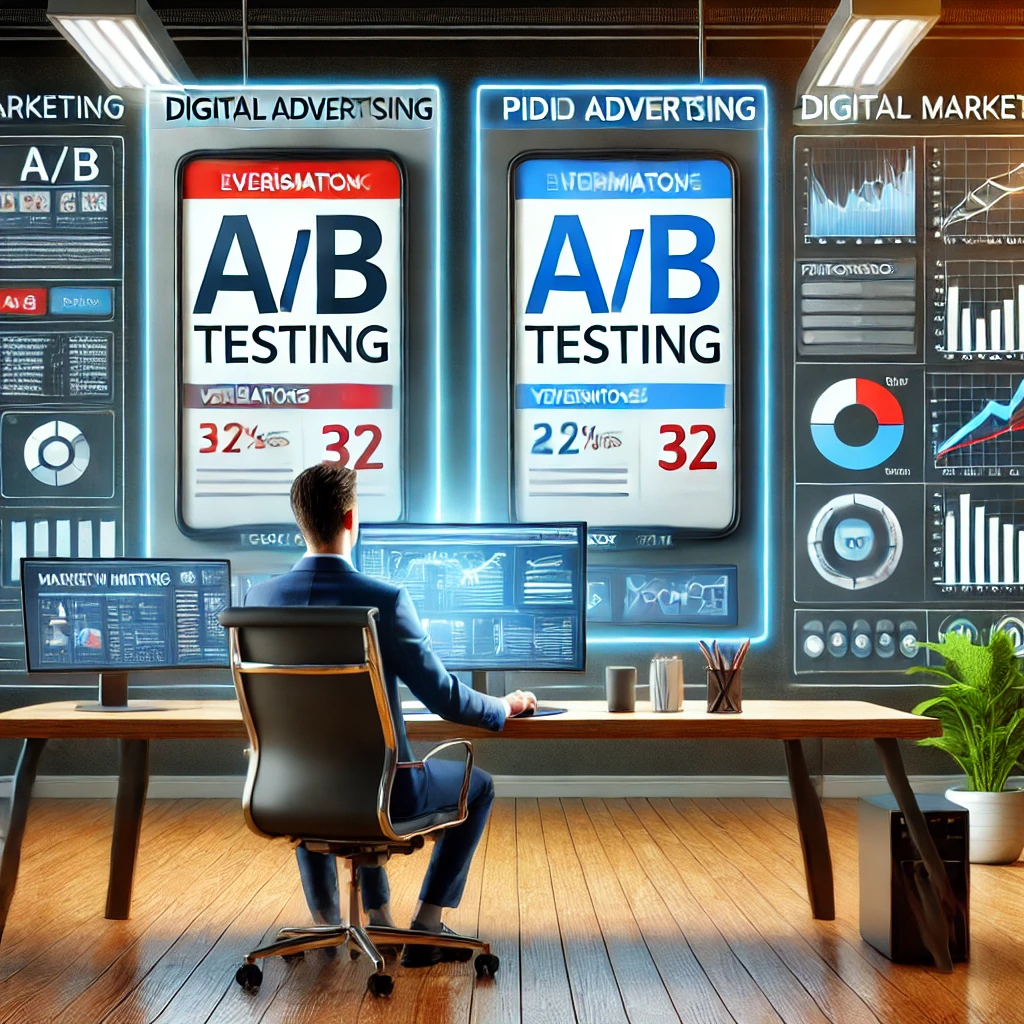Running paid advertising campaigns can be costly, and getting the best return on investment (ROI) is a top priority for marketers. However, many businesses struggle to optimize their ads effectively.
This is where A/B testing comes in—a powerful technique that helps advertisers refine their campaigns by comparing different versions of an ad to determine which one performs better.
In this article, we will explore how A/B testing works, why it is essential for paid advertising, and how you can implement it to maximize your ad performance. By the end, you’ll have a clear understanding of how to use A/B testing to increase engagement, lower costs, and improve conversions.
1. What is A/B Testing in Paid Advertising?
A/B testing, also known as split testing, is a method of comparing two versions of an ad to determine which one delivers better results. It involves running two variations of an ad simultaneously, changing one element at a time—such as the headline, image, or call-to-action (CTA)—while keeping everything else the same.
For example, let’s say you have an ad promoting a new product. You create two versions:
- Ad A uses a bold, attention-grabbing headline.
- Ad B has a more informative, benefit-driven headline.
By running both ads and analyzing the results, you can determine which headline resonates better with your audience. This method provides valuable data-driven insights, allowing advertisers to make informed decisions rather than relying on guesswork.
2. Key Elements to Test in A/B Testing
To get the most out of your A/B testing, focus on testing the right elements. Here are some key components you should experiment with:
- Headlines: The first thing people notice in an ad. Try different wording, lengths, and tones to see what attracts the most engagement.
- Images & Videos: Visual content plays a crucial role in ad performance. Test different images, colors, and even video formats to find what works best.
- Call-to-Action (CTA): Experiment with various CTAs, such as “Shop Now” vs. “Learn More” to see which one drives more clicks.
- Ad Copy: Change the wording and structure of your ad copy to determine what resonates most with your audience.
- Landing Pages: Test different landing pages to ensure consistency and improve conversion rates.
- Audience Targeting: Experiment with different audience segments to identify the most responsive groups.
By systematically testing these elements, you can refine your ads and significantly improve performance over time.
3. How to Set Up an Effective A/B Test
To ensure your A/B testing produces meaningful results, follow these best practices:
- Define Clear Objectives: Determine what you want to measure—CTR (Click-Through Rate), conversion rate, cost per acquisition, etc.
- Test One Variable at a Time: Changing multiple elements simultaneously can lead to misleading results. Focus on one factor per test.
- Use a Large Enough Sample Size: Running your test with too small of an audience can lead to inaccurate conclusions. Ensure your test runs long enough to collect sufficient data.
- Run Tests Simultaneously: Running variations at different times can skew results due to external factors such as seasonality or trends.
- Analyze Data & Implement Changes: Once your test is complete, review the results and apply successful elements to future ads.
Following these steps will help ensure accurate testing and lead to better ad performance.
4. Common A/B Testing Mistakes to Avoid
While A/B testing is a powerful tool, there are common pitfalls marketers should avoid:
- Ending Tests Too Soon: Don’t stop a test after just a few hours or days. Give it enough time to gather significant data.
- Testing Too Many Variations at Once: Stick to two versions at a time to ensure reliable results.
- Ignoring Statistical Significance: Use tools like Google Ads Experiments or Facebook’s A/B Testing feature to ensure results are statistically valid.
- Focusing on Vanity Metrics: Metrics like impressions and clicks are important, but conversions and ROI should be the primary focus.
- Not Applying Insights to Future Campaigns: Learning from your tests is crucial—make adjustments and continuously optimize.
Avoiding these mistakes will make your A/B tests more effective and lead to better marketing decisions.
5. Why A/B Testing is Essential for Ad Success
In today’s competitive digital landscape, running ads without testing is like shooting in the dark. A/B testing helps businesses:
- Lower Costs: By identifying the most effective elements, you can reduce wasted ad spend and improve ROI.
- Improve Engagement: Ads that resonate with your audience lead to higher click-through rates and engagement.
- Increase Conversions: Testing allows you to find the best-performing ad variations, leading to more sales or sign-ups.
- Make Data-Driven Decisions: Rather than relying on intuition, you base decisions on real user data, reducing guesswork.
With continuous testing and optimization, businesses can stay ahead of the competition and maximize their advertising efforts.
Conclusion
A/B testing is one of the most effective ways to optimize your paid advertising campaigns. By systematically testing different elements, you can improve performance, lower costs, and achieve better results. The key is to test one variable at a time, analyze the data carefully, and apply your findings to future campaigns.
Now that you understand how A/B testing works, it’s time to start implementing it in your own ad campaigns. What element will you test first? Share your thoughts in the comments below or try running your first A/B test today!




